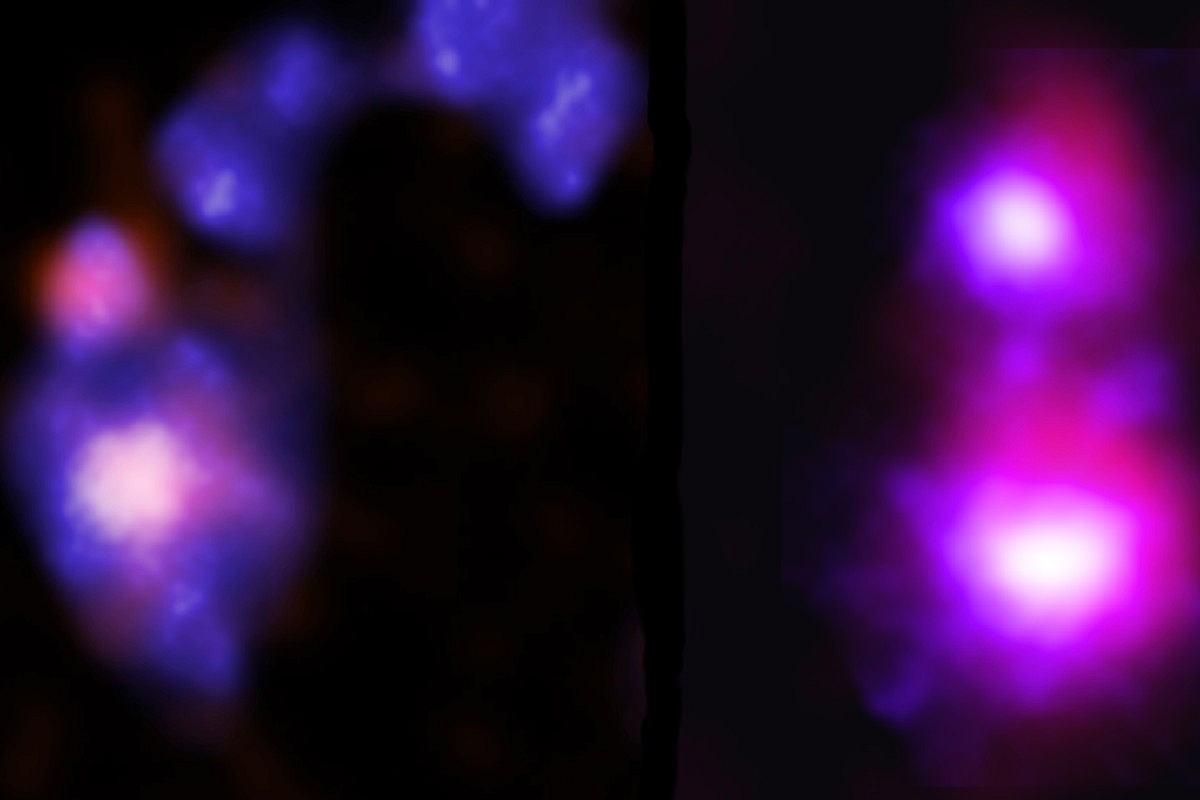Science
NASA's Chandra X-Ray Observatory Discovers Supermassive Black Holes On Collision Course

Pic Via NASA Website
A recent study conducted using NASA's Chandra X-Ray Observatory has made a groundbreaking discovery that could reveal important information about the growth of black holes in the early universe.
The study tracked two pairs of supermassive black holes in dwarf galaxies on collision courses, providing scientists with the first concrete evidence of such an impending encounter.
The study focused on dwarf galaxies, which contain stars with a total mass less than 3 billion Suns - about 20 times less than the Milky Way.
It's long been suspected by astronomers that dwarf galaxies merge, particularly in the relatively early universe, in order to grow into larger galaxies.
However, current technology cannot observe the first generation of dwarf galaxy mergers because they are extraordinarily faint at their great distances.
The new study has overcome this challenge by implementing a systematic survey of deep Chandra X-ray observations and comparing them with infrared data from NASA's Wide Infrared Survey Explorer (WISE) and optical data from the Canada-France-Hawaii Telescope (CFHT).
The study has discovered two examples of supermassive black holes on collision courses, providing valuable insights into the details of merging black holes and dwarf galaxies.
The first pair of black holes is located in the galaxy cluster Abell 133 located 760 million light-years from Earth, while the second pair was discovered in Abell 1758S, a galaxy cluster approximately 3.2 billion light-years away.
The researchers have nicknamed the first pair of merging dwarf galaxies "Mirabilis," while the second pair has been named "Elstir" and "Vinteuil." By studying these two systems, astronomers hope to better understand the crucial processes that occur during galaxy mergers, and gain insights into our own Milky Way's past.
The details of this study have been published in The Astrophysical Journal.
Scientists think nearly all galaxies began as dwarf or other types of small galaxies and grew over billions of years through mergers. Follow-up observations of these two systems will allow astronomers to study processes that are crucial for understanding galaxies and their black holes in the earliest stages of the Universe.
Introducing ElectionsHQ + 50 Ground Reports Project
The 2024 elections might seem easy to guess, but there are some important questions that shouldn't be missed.
Do freebies still sway voters? Do people prioritise infrastructure when voting? How will Punjab vote?
The answers to these questions provide great insights into where we, as a country, are headed in the years to come.
Swarajya is starting a project with an aim to do 50 solid ground stories and a smart commentary service on WhatsApp, a one-of-a-kind. We'd love your support during this election season.
Click below to contribute.
Latest